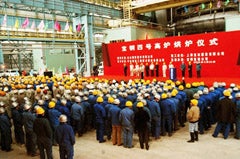China has become the most appetizing dish in the world of global business. However, China can sometimes provide a dose of indigestion for gluttonous executives. To avoid stomach cramps, experts caution against becoming taken in by current fashion. Executives should first of all study China and decide whether its market makes sense for their business. If they decide that it does, then they should analyze both the potential as well as its risk of any future transaction.

Sign up to stay informed about our latest article releases.